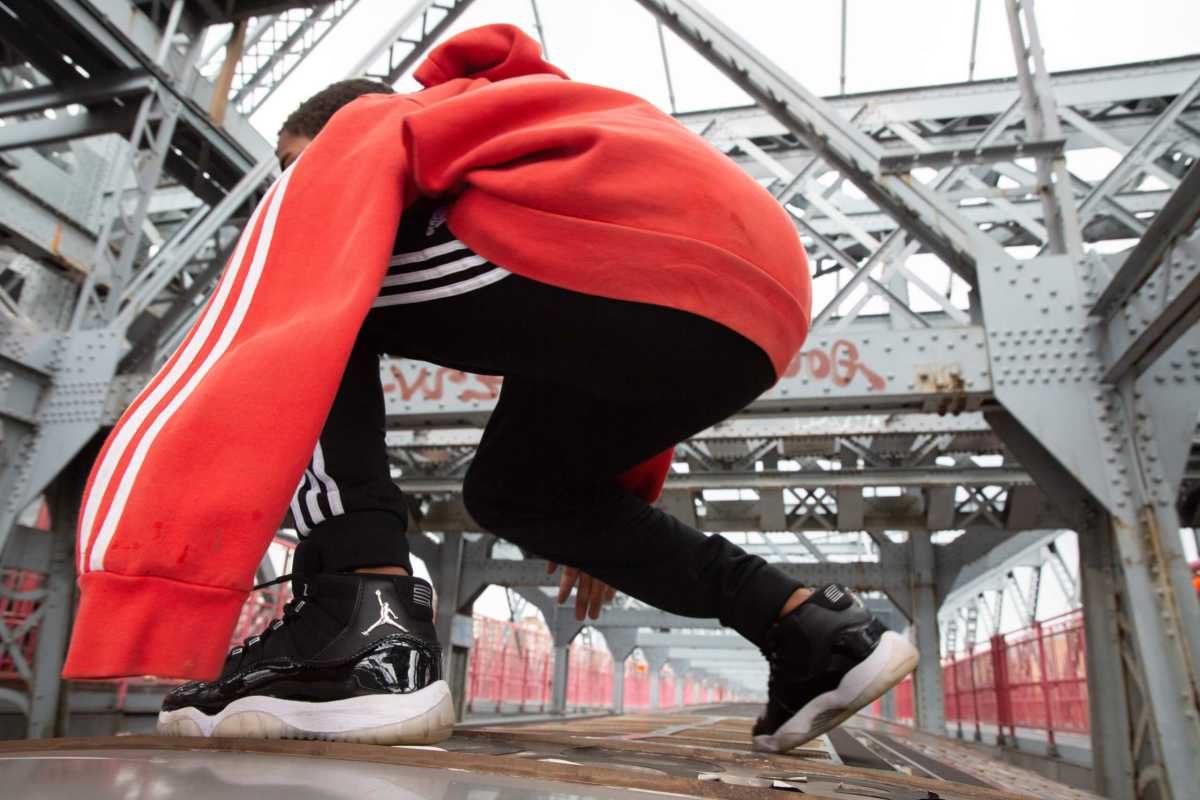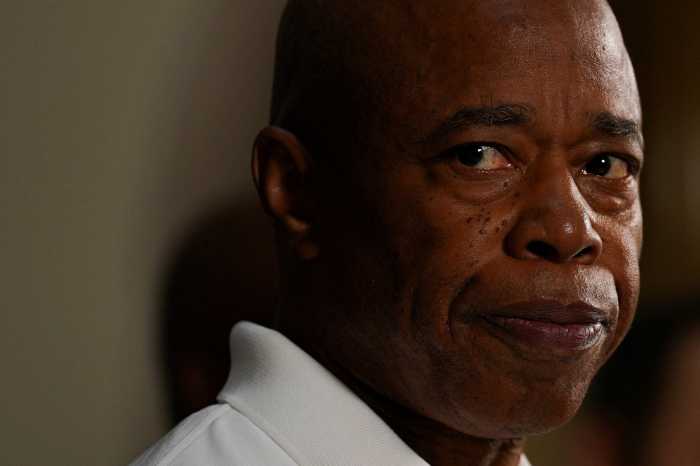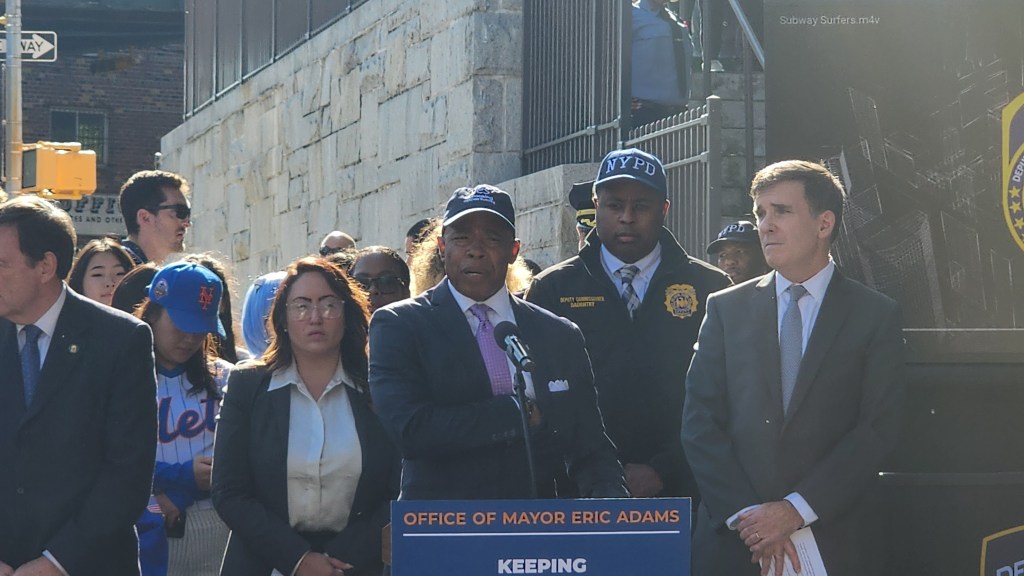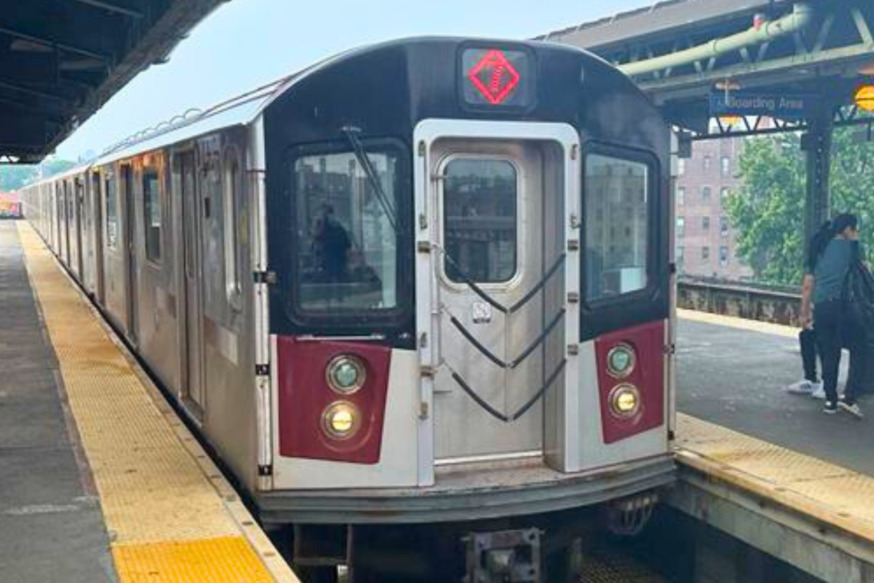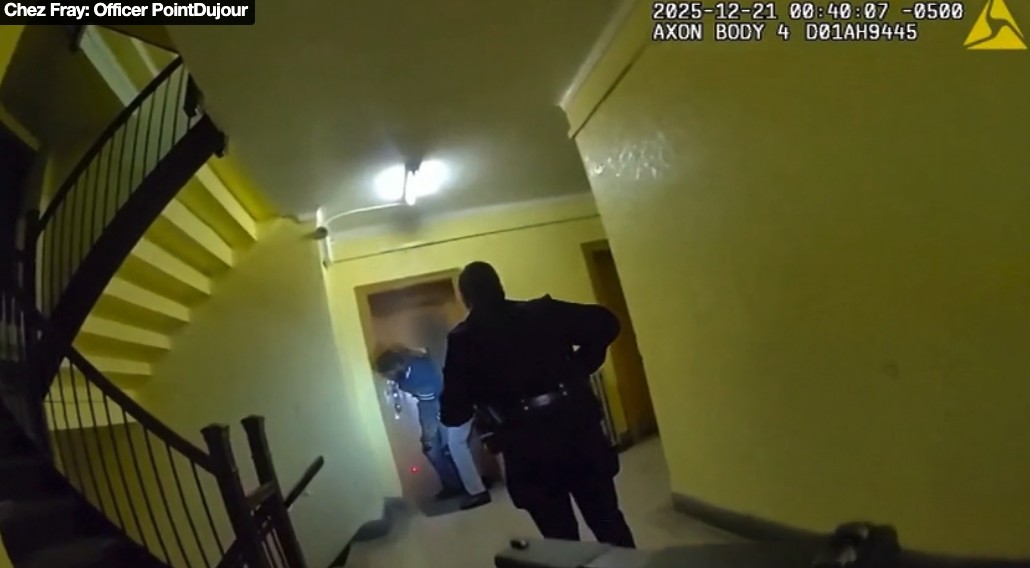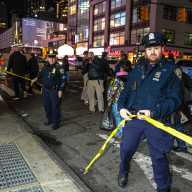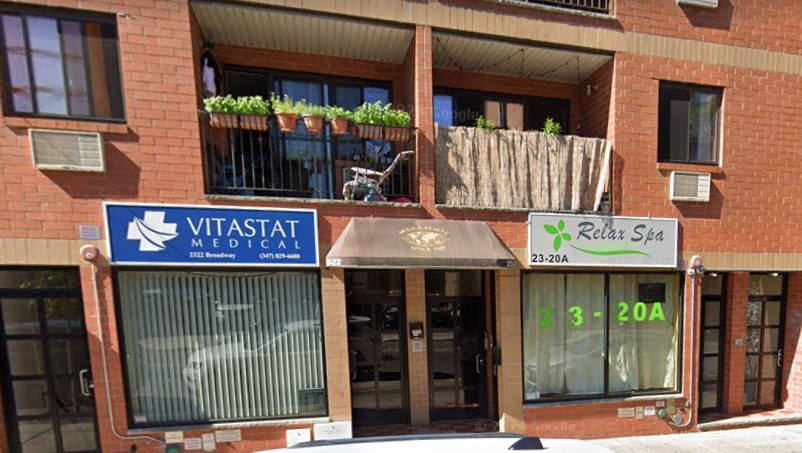NYC Council members and agency leaders tackled subway surfing at a Monday oversight hearing, discussing various ways to stop young New Yorkers from participating in the dangerous, often lethal trend.
Subway surfing — the act of riding on top of a moving train — has increased in recent years, with at least five people killed last year and six deaths this year, Queens City Council Member Selvena Brooks-Powers, chair of the committee on transportation and infrastructure, said at a joint oversight hearing.
“We’re here to dig into the root causes of subway surfing and discuss solutions,” Brooks-Powers said.
Social media: A ‘driving force’
Leaders from the Metropolitan Transportation Authority (MTA), the NYPD, and NYC Public Schools agreed on at least one factor at the Nov. 18 hearing: Social media is fueling the fatal fad of subway surfing, potentially endangering many of the 350,000 public school students who ride the rails daily.
“The MTA is pressing social media companies to take down viral videos of this dangerous behavior,” said Michael Kemper, chief security officer at the MTA and former NYPD chief of transit. “We’re searching for this kind of content every day, and so far, we flagged more than 10,000 posts to be deleted on platforms like Facebook, Instagram, TikTok and Snapchat. That work will continue.”
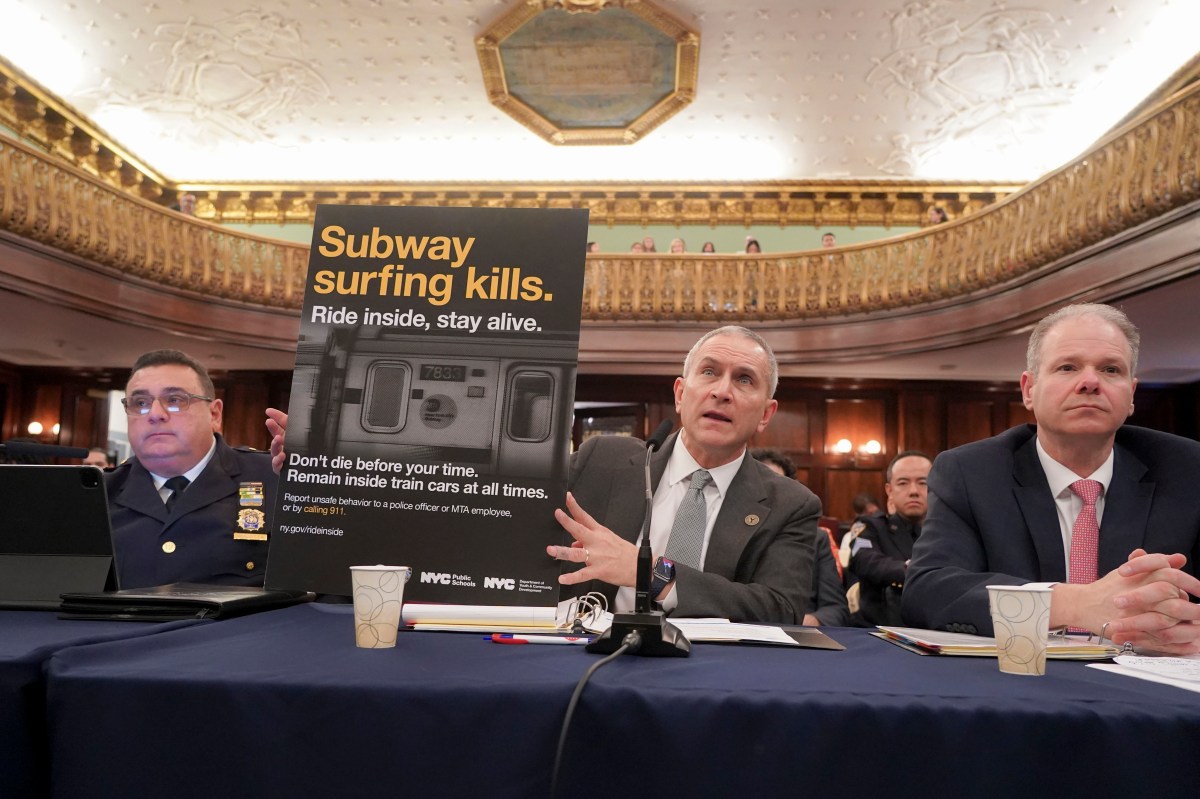
NYPD Chief of Transit Joseph Gulotta said the average age of subway surfers is 14, but some apprehended offenders are as young as 9. While subway surfing is not new, he argued that social media is making the problem worse.
“We see social media as the major driver of this behavior,” he said. “We see from surfers trying to capture and share edgy content on social media platforms is a phenomenon that we did not see in decades that passed.”
To combat the increase, Gulotta said, the NYPD has implemented a multi-faceted plan to curb the trend, including new home visits to parents whose children have been caught subway surfing.
“When we speak to them, and show them the dangers of this action, they truly realize the seriousness and impact,” he said.
Eyes above the lines
The NYPD recently implemented drone technology to watch for subway surfing in neighborhoods that experience high complaints of the crime. According to MTA data, subway surfing spikes in warm weather during the school year when classes end for the day. Incidents decrease in July and August.
The 7 train in Queens is the most popular location for subway surfing, Kemper said, because it lends itself to the kind of videos and social media reels that kids want to make.
“It’s a location that attracts subway surfers for a few different reasons. It’s an elevated train line. It is relatively flat. It’s extremely scenic,” he said. “This all fits into what’s driving subway surfing. That backdrop of the 7 line brings a lot.”
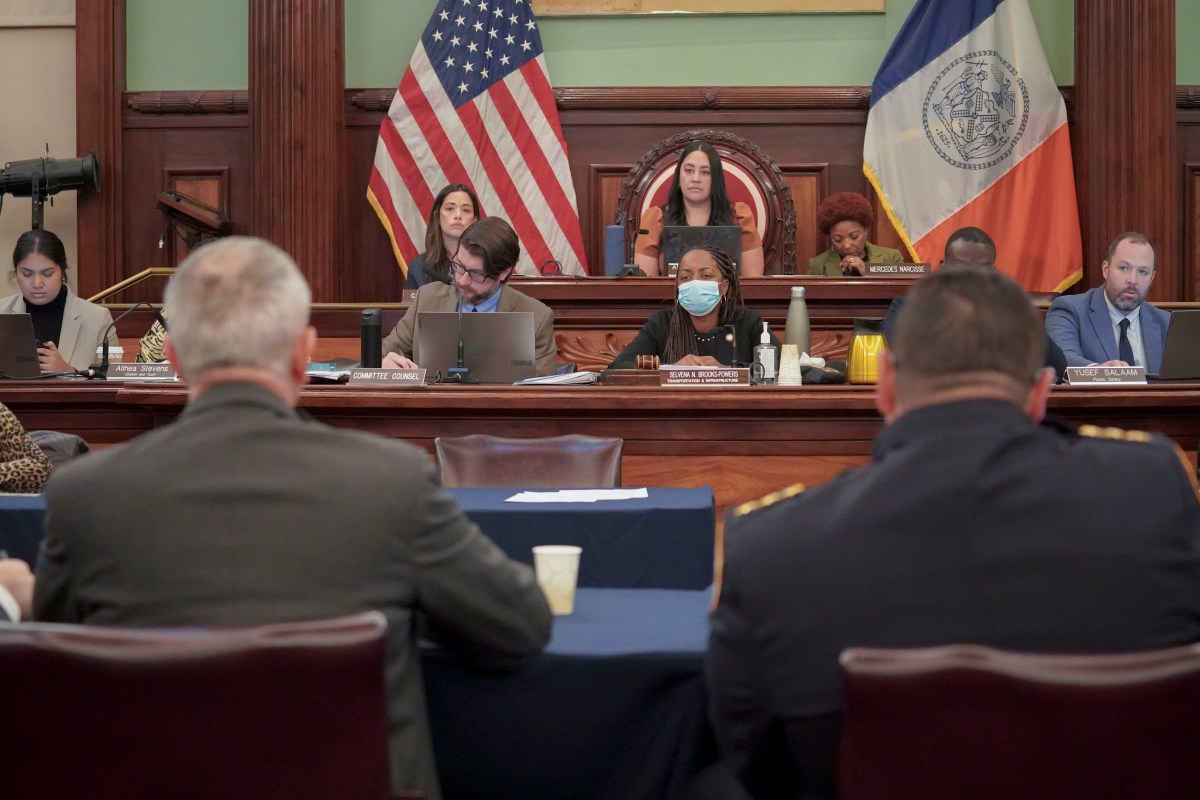
Brooks-Powers asked MTA officials if they could make infrastructure changes to trains and platforms — such as modifying emergency exits to prevent access to the roof — to discourage subway surfing.
MTA officials responded that any engineering solutions would have to ensure the safety of passengers when exiting during emergencies and the safety of employees when performing maintenance.
Brooks-Powers questioned whether the “Subway Surfing Kills: Ride Inside, Stay Alive” public awareness campaign is working or if something else needs to be implemented
Mayor Eric Adams and the MTA also launched the program last year, highlighting the dangers of subway surfing. The campaign includes public service announcements in stations recorded by students, digital signage across stations, student-created graphics and animations, posters and banners across stations and distributed in schools, and other forms of outreach.
At Monday’s hearing, MTA officials said that all forms of awareness help, especially parent involvement.
Kemper reiterated that parents play a key role in preventing subway surfing, especially when they see surveillance video of their child on top of a train.
“I’ve said it so many times that there’s no greater partner in our efforts to combat subway surfing than a concerned parent,” Kemper said. “The parent coming and actually seeing it. It has so much more value than a slap on the wrist that apprehension would create.”
Through October this year, the NYPD has arrested 163 people for subway surfing, a 22% jump from the 138 cuffed in 2023.



